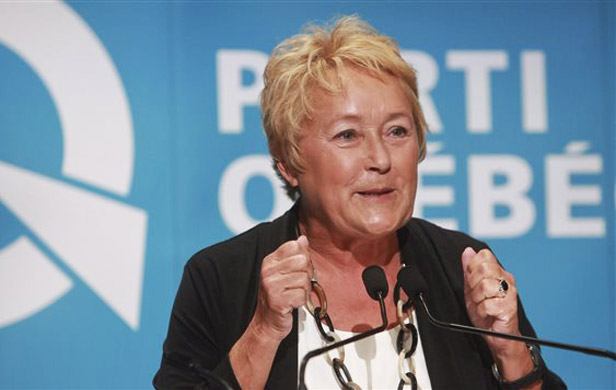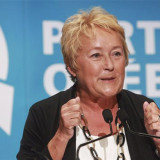
On November 7, the Parti Québécois government at long last introduced a Bill on the La Charte des valeurs (Charter of values) to the National Assembly, but under a new, very long name: La Charte affirmant les valeurs de laïcité et de neutralité religieuse de l’État ainsi que d’égalité entre les femmes et les hommes et encadrant les demandes d’accommodements (The Charter affirming laic values,the neutrality of the state as well as equality between men and women and a framework for requests for accommodation). For the purpose of simplicity, from here on the Bill will be referred to as La Charte.
The purpose of this article is to provide background information or the context for La Charte. Most of the information contained in this article is common knowledge for francophone Québec but rarely available in English and, as such, virtually unknown to English Canada. This leads to many misunderstandings, often referred to as the two solitudes.
La Charte des valeurs appeals to variety of very different groups
Contrary to what many in English Canada may think, the debate in Québec about La Charte represents a cocktail of factors.
One of the main components of the cocktail has to do with the Québec dark years known as “la grande noirceur” – the years during which the Québec francophone community lived under draconian Catholic Church rule, when music and films were censored, women who had sexual relations prior marriage were sent into the streets, and abducted children born outside marriage were put in Church orphanages.
One might say that these dark years are now looked upon by the majority of Québécois as being as reprehensible as residential schools are for members of Canada’s First Nations.
Accordingly, the sentiment to separate religion from the state is several notches stronger in Québec than in the rest of Canada.
Add to this cocktail the fact that, for women, these dark years included women being labelled as inferior in a male-controlled world. Consequently, many in the feminist movement want to make sure that religious symbols of inferiorization, worn on one’s body or otherwise, are banned from the public sector.
Yet another component of the cocktail is the 1936-1039 and 1944-1959 reign of Premier Maurice Duplessis, who had a pact with the Catholic Church to control the people. Under the pact, the Church would run the Catholic schools, the hospitals and civil society in general, as long as it kept the people docile under the Duplessis economic development formula, entailing cheap labour and union/communist-busting features. In honour of this pact, in 1936 Premier Duplessis had a crucifix placed over the Speaker’s chair in the National Assembly.
Pauline Marois follows Harper model of targeting markets
Pauline Marois, like Stephen Harper, wants to be in full control and consequently detests being stuck in a minority government position. But because her first year in power has been one of a seemingly endless series of incoherent improvisations, she has lost control of public opinion. In that sense, her government is not all that different than the Charest Liberal government that preceded the PQ.
While she had promised she would eliminate the health tax during her election campaign, her first budget included a health tax of $200 for those earning $42,000 to $100,000. Another election promise entailed addressing the absurdly low royalties and taxes paid by Quebec’s mining industry, but once in power, she backed down to the industry lobby.
She had promised to migrate Quebec to a green economy, but, so far, she seems okay with the two pipeline proposals to transport tar sands oil into – and crossing through – Quebec, and is not ruling out exploiting potential local oil reserves.
All this has added up to widespread dissatisfaction with the Marois government and poor prospects for pursuing a majority government. This is where La Charte comes in.
Marois’ game plan
In early Fall 2013, Pauline Marois introduced the Charte, figuring it could position the PQ for a majority government by creating a perceived crisis among Québécois to the effect that Québec had an epidemic of new religious immigrants who were imposing their values on the majority population.
The game plan entailed calling an election for December 2013, while La Charte was a hot topic, and cutting into the homogenous outlying regions’ right wing nationalist vote – designed to foster a migration of the Coalition pour l’avenir du Québec (CAQ) vote over to the PQ. That made “political sense” in that CAQ support is declining.
The plan also counted on the feminist movement. Accordingly, as did Harper when he placed “correct thinking” people on the Board of Rights and Democracy, Marois appointed four new “correct thinking” members to the Conseil du statut de la femme (Council on the Status of Women). But it backfired when the president of the Conseil, Julie Miville-Dechêne, publicly denounced this political interference. The reality is that the woman’s movement in Québec is divided on the issue.
November’s Montreal municipal elections
During this same period, all four of the main candidates for Mayor of Montreal for the November 3, 2013 elections came out against the Charte.
On election day, Denis Coderre, former federal Liberal Cabinet minister – the very in-the-box, unimaginative candidate for mayor with a sparse and vague platform (he actually thinks more parking spaces downtown is a solution to Montreal’s infamous congestion problems) – became the city’s new mayor with 32% of the vote. On La Charte, Coderre had said in one of the election debates that he would contest it in the courts if it included the ban on religious symbols in the public sector.
For common Sense Canadian readers in BC, it may be also interesting to note that innovative, visionary candidate for mayor, Richard Bergeron of Projet Montréal, often referred to Vancouver as a model for urban densification and a green city. He came in second with 25.6%.
New voices against La Charte
Concurrent with the municipal election campaigning, others condemning the Charte elements pertaining to the wearing of religious symbols were Quebec’s hospitals’ association, universities, a teachers’ union, a private daycare centres’ association and many more.
Adding his voice to this opposition, the president of La Commission des droits de la personne et des droits de la jeunesse (human rights and youth rights commission), Jacques Frémont, went public to say La Charte would not pass the test of either the Quebec Charter of Rights or the Canadian Charter of Rights in the event of a legal challenge. Either the PQ would have to modify the proposed Charte or revert to the “Notwithstanding clause.”
In effect, it has become very clear that it would be impossible to apply La Charte in the Montreal Statistics Canada census area, which attracts 87% of Québec immigrants and which represents over 45% of the population of Québec.
But all these obstacles did not deter the PQ.
Rather, the factor that changed Pauline Marois’ mind about going into a December 2013 election with the highly emotional Charte as a wedge issue, was the polls, which did not reflect the support she hoped for. As a result, as of October 27, the December 2013 election hype has been called off.
Swinging Further to the Right
Cultivating the right nationalist vote for La Charte is not, unfortunately, an isolated incident.
Shortly after coming into power, the Marois government appointed Pierre Karl Péladeau – controlling shareholder of Quebecor and Sun Media, well-known for his support of right wing causes – to sit on the Board of Hydro-Québec. Péladeau has since attended at least two Marois Cabinet meetings.
His spouse, Julie Snyder, host of the popular Star Académie (Québec equivalent to American Idol), is one of the members of the Janette movement, a women’s movement in support of La Charte. Julie Snyder is also involved in the development of a television production presenting a favourable portrait of Marois, to be aired on TVA, a TV network owned by Péladeau’s media empire.
Which brings us back to what Pauline Marois said when she became the leader of the PQ. At the time, she said she would modernize social democracy. She never explained what she meant, but after a year in power, it is becoming clearer as to what she had in mind – going after the right wing nationalist vote to put sovereignty over the top. Fortunately for Canada, the game plan is not working. But absolutely nothing can deter Pauline Marois. On November 7, she introduced La Charte to the Quebec National Assembly.
La Charte goes to the National Assembly
Pauline Marois knows that her Bill on La Charte will not get passed as proposed under the minority government at the National Assembly. But like Harper with his obsessions, Marois continues to insist that her Charte will unite Québécois, once again hoping that – eventually, that is – by the time the minority government is dissolved, she will be able to count on gaining new support among the right wing nationalists in Quebec’s outlying regions.
One might conclude that Pauline Marois is engaged in what Einstein referred to as insanity: “doing the same thing over and over again and expecting different results.”


http://www.salon.com/2013/08/06/the_definition_of_insanity_is_the_most_overused_cliche_of_all_time/
If La Charte was about equality it would ban all religious symbols and not allow small crucifixes along with turbans, burqas, etc.
A very cynical person might think this is all merely to provoke an attack in Quebec so more draconian laws can be brought to force.
My goodness! Canadian politicians are strange creatures. Where are they all coming from? They seem to be everywhere and all trying, one way or another, to mess up Canada. It seems like we should have a lunacy test for anyone running for public office in our country. Heaven help Canada if this keeps up; they can’t tell the truth, they lie with almost every utterance, they seem to hate our wonderful country, and they don’t care about the opinions/preferences of the Canadian people. The only people I can wish to see elected are very few and belong to neither the Cons or the Libs. I had some hope for Trudeau, until I read some of his speeches, and there was another weird Canadian politician. This country that I love is being destroyed by the ones who are supposed to be the strength keeping it going.
I think this entire Seperatist “cause” is a generational thing thats slowly dying.
I was in Quebec City last summer to visit friends. 4th visit in 30 years. Absolutely beautiful architechture and the Canadian history is mind boggling. I highly recommend visiting it in June( not to muggy) even if you cant speak french
. I went out alone in the evening to check out a few bars and everywhere I went the young people(20-30’s) wanted to practice their english. I asked a few kids where they learned english. The internet was the reply 90% of the time.
The Federal govt has been pumping millions of dollars into the refurbishment of the City and its 400 year old infrastructure. Go see it. You’re tax dollars helped pay for it.